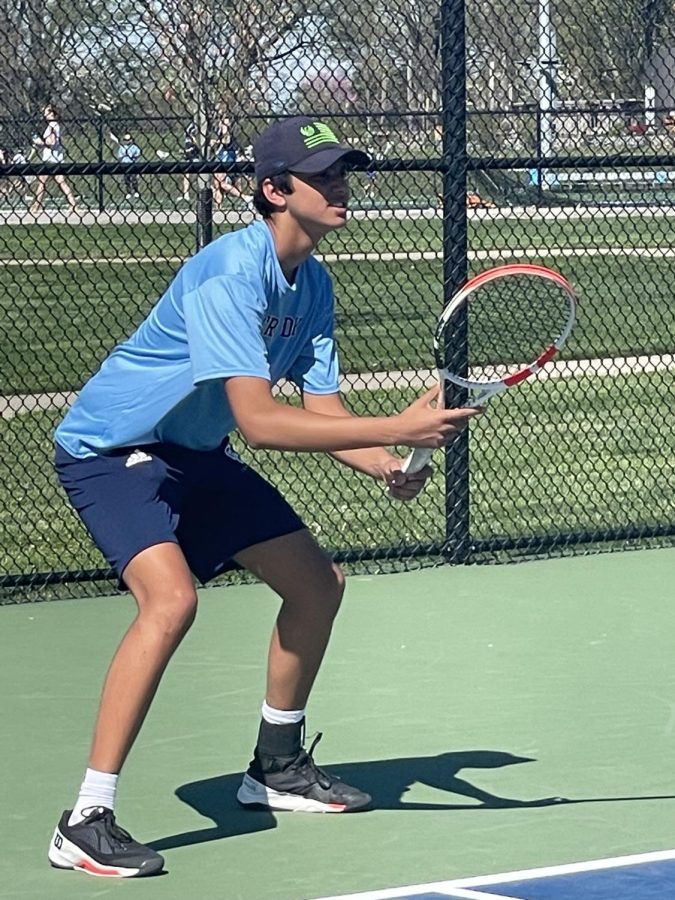By Victoria Mairal-Cruz ’12, Lens Editor
Muscles burning, body slicked with sweat, hands sticky with popped blisters- that’s the joy of the rower. I recently had the privilege of becoming a part of this crazy, masochistic world, and I have loved every moment of it—even when I thought I would pass out from exhaustion. From the time I learned to sweep, or how best to treat blisters, here’s an inside look into the life of a novice rower.
I never even thought of rowing until my brother came to CCDS, his heart set on one day rowing in the Olympics. Although afraid that, as a person not naturally gifted with athleticism, I would not be able to handle the trials of rowing, I decided to join the team anyway, determined to work hard and succeed.
I soon learned that there was much more to rowing than just sitting in a boat. As a part of the Crew team, rowers are expected to stay at a regatta (where rowing teams race) until the last boat has raced. Once the last CCDS boat is off the water, everyone on our team stays to de-rig the boats (prepare them for travel to and from a regatta). This basically requires removing the riggers, which hold the oars, from the boats, and putting everything away in the trailer. We all work together to prepare boats and make sure everything runs smoothly. While this is not the most glorious aspect of rowing, it is necessary and must be done properly. I like this part of rowing: I find it fun to use wrenches to unscrew all the nuts and bolts, and I also have the job of organizing the “box.” The box is a large, plastic box in the trailer in which we put all the wrenches, life jackets, and boat supplies. My job is to make sure everything fits—it’s like solving a puzzle!
The Crew Spring Break Trip to Oak Ridge, Tennessee was my first taste of life as a rower. Each day, we woke at 5:30 AM, were downstairs for breakfast at six, and were carrying our boats to the water at seven—right at first light. We ran each day, up to five kilometers sometimes.
One of the most beautiful sights I have ever seen was Melton Lake at dawn. The hills were silhouetted against the sky, as the sun crept up from the horizon. The water lay still, reflecting the pinkish sunrise. This is my favorite part of rowing: I absolutely love the water. To be in the center of a vast expanse of swirling, rushing, sparkling water is exhilarating!
Rowing requires a combination of concentration, endurance, strength, and technique. Novices focus on learning technique; once you have the gist of how to row properly, then you can worry about timing and how much power you use. At the Dogwood Regatta on Saturday, April 30, 2011, in Oak Ridge, Tenn., I rowed in the Novice girls’ eight. As is typical for most of the regattas we race in, the race was 2000 meters long. After the first thousand meters, everyone in my boat was getting tired, and our technique began to waver. For me, the most difficult aspect of rowing is keeping time. Everyone in a boat must be perfectly synchronized for the boat to move most efficiently through the water. Each rower must match the movements of stroke seat (the rower in the very front) exactly, so that they move as one, and the full power of the boat is exerted on the water. This requires much concentration: your focus has to be on the boat, and only on the boat.
But, when the team is rowing together, that feeling of connection and grace is worth the pain. Blisters are the rower’s pride: they are our trophies, scars of glory, proof of pain and hard work. They are to be exalted and admired. After rowing my first 2k race at the Dogwood Invitational, I had a string of freshly formed and opened blisters about an inch and a half long down my right hand ring finger, close to my palm. I showed my team, saying, “Check out my new blisters!” And, although they said “Ouch!” or made sympathetic faces, they also congratulated me for getting blisters. Rowers generally don’t cover blisters up, because it’s really not worth it: if you cover them when you row, you just get new blisters where the bandage rubs against your skin; you have to let them dry in the open, and use the “extreme” treatment- use your hands as if you had no blisters. That means shampooing in the shower, and washing your hands without any bandages. While blisters are very painful, they are the price rowers pay for glory, and I am very proud of mine.
Regattas are the best part about rowing. My favorite part is the people you get to meet. For example, at the Dogwood Invitational, I met a rower who lived on a chicken farm in Augusta, Georgia! While waiting in line for two hours for a t-shirt, I met some members of Atomic Rowing, the team hosting the regatta, and we talked about everything— from the local Chinese food scene to how best to scull (rowing with two oars, one in each hand). Another cool thing is that you get to sit around lounging and eating all day while you wait to row, and, while it can get boring, the wait is worth it. As we carried the Mac Attack II (our boat) back to the trailer after racing it, we were exhausted and our muscles screamed in pain, but we walked with the knowledge that we had rowed our hardest, did our best, and, though it was but our first time rowing in a regatta, we did not come in last.







